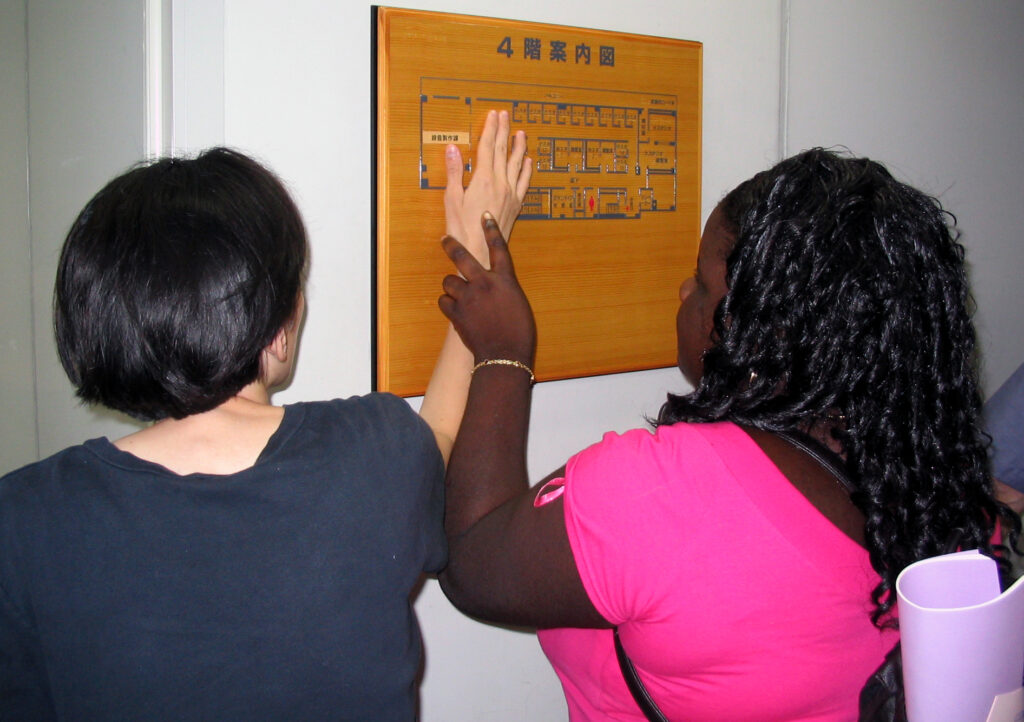Masume Assaf, Director of Global Programs at Pennsylvania State University, recalls what support for international students used to look like in earlier times. In one instance, the disability services office had created a tactile map of the campus on a 6×6 board so that a Japanese blind student could use it to navigate around campus. The former Global Programs Assistant Director at the time also took this student under her wing to support her through the transition of arriving to a new disability culture with new opportunities to be independent.
This occurred in the 1990’s, when very few international students with disabilities arrived to study in the U.S. The Americans with Disabilities Act (ADA) was just underway and students were slowly learning about access abroad. Today, with more and more international students with disabilities arriving to the U.S., offices are realizing the broader needs for students in addition to a tactile map of campus to support their transition to a U.S. campus.
Keith Jervis, Director of Penn State’s Disability Services Office, started to see the need for pre-arrival support for international students with disabilities after advising two blind international students. Both students arrived without equipment such as a refreshable braille display or updated text to speech software, and neither had access to orientation and mobility training in order to navigate the campus independently. Both students were unaware of laws that prevented them from having full access to certain vocational rehabilitation support compared to U.S. citizens.
Transitioning to a new disability culture, structure, and legal system can be challenging for students and can cause delays in a student’s academic success and integration to campus life. Keith knew times were changing and that new programming would be needed.
Keith started by reaching out to the Global Programs office to collaborate for effective support for international students with disabilities. Keith proposed first for the Disability Services Office to be included in all new international student messaging that the Global Programs office disseminates before students arrive to the U.S.
He crafted a welcome statement including Penn State’s commitment to diversity and equity in all aspects of campus, specifying students with disabilities. He added links to his Disability Services Office, Mobility International USA resources, and a story from an international student with a disability from Penn State.
Keith and Masume continue to collaborate on other ideas that can further support international students with disabilities’ transition to a U.S. campus. Plans are underway to create info sessions, enhance pre-arrival support, and share costs for orientation and mobility training, software, and additional equipment.
Masume recalls seeing that tactile map once again, this time in the hallway, waiting to be thrown out. “It did make me sad, but it no longer resembled the current campus.”
This was not only an outdated sign of campus, it was a sign of the times that, going forward, support for students with disabilities would take on a more progressive – and more proactive – approach.
Read more about Accessibility at U.S. Colleges and Universities in Related Links.

